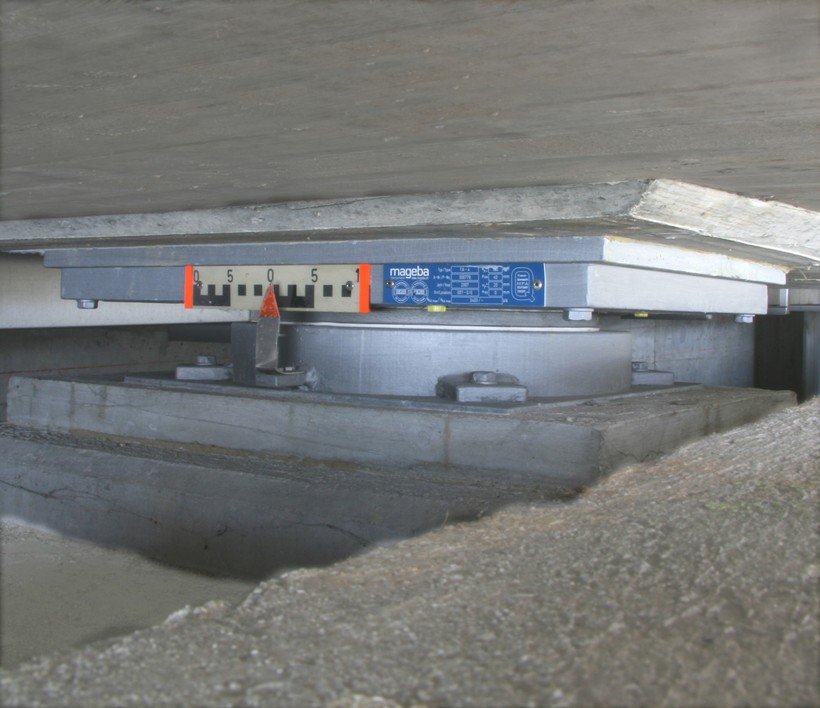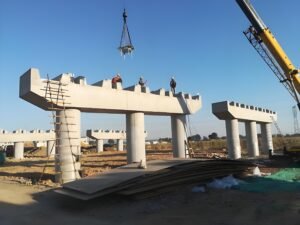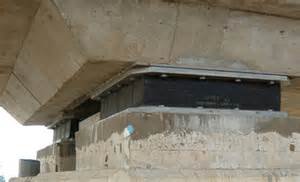Bridges are marvels of engineering, essential for connecting different parts of a region and facilitating smooth transportation. At the core of these structures lie bridge bearings, critical components that ensure the stability and longevity of the bridge. This article explores the significance of bridge bearings, their types, arrangement, installation, and maintenance, providing a detailed understanding of why these components are indispensable.
What Are Bridge Bearings?
Bridge bearings are vital structural elements placed between the bridge superstructure and the substructure. They transfer loads and accommodate movements caused by various factors like temperature changes, traffic loads, and concrete shrinkage. These bearings are designed to support vertical and horizontal loads while allowing for controlled movement and rotation. There are two main types of bearings: fixed bearings and movable bearings.
Types of Bridge Bearings
Fixed Bearings
Fixed bearings are designed to allow rotation but restrict horizontal movement. They provide stability to the bridge structure by holding it in place while accommodating the natural rotations that occur due to load changes.
Movable Bearings
Movable bearings, also known as expansion bearings, are designed to allow both rotation and horizontal movement. They adapt to the thermal expansion and contraction of the bridge materials, ensuring that the structure remains intact despite temperature fluctuations.
Classification of Bridge Bearings

Bridge bearings can be classified based on their deformation capability, materials used, and structural form.
Deformation-Based Classification
- Fixed Bearings: Allow rotation but prevent horizontal movement.
- Single Activity Bearings: Allow movement in one direction.
- Multiple Activity Bearings: Allow movement in multiple directions.
Material-Based Classification
- Steel Bearings: Include flat bearings, arc bearings, rocker bearings, and roller bearings.
- Sliding Bearings: Include both fixed and movable bearings.
- Rubber Bearings: Include plate rubber bearings, PTFE sliding plate rubber bearings, basin rubber bearings, lead rubber bearings, and high damping vibration isolation rubber bearings.
Structural Form-Based Classification
- Arc Bearings
- Rocker Bearings
- Roller Bearings
- Plate Rubber Bearings and PTFE Rubber Bearings
- Pot Type Rubber Bearings
- Spherical Steel Bearings
- Tension and Compression Bearings
Common Bridge Bearings
Several traditional bridge bearings are widely used based on the specific requirements of the bridge structure:
- Bedding Bearings: Made from linoleum or asbestos, used for small-span bridges.
- Plate Bearings: Comprise upper and lower flat cast steel plates, suitable for medium-span bridges.
- Arc Bearings: Improved slip and rotation performance, used for longer spans.
- Rocking Shaft Bearings: Suitable for medium-span beam bridges.
- Hinge Type Fixed Bearings: Used for large-span girder bridges.
- Hinged Roller Bearings: Used for large-span beam bridges with significant support reactions.
- Two-Way Movable Bearings: Used for large-width girder bridges.
Arrangement of Bridge Bearings

The arrangement of bridge bearings is crucial for ensuring the proper distribution of loads and accommodating bridge movements. The following principles guide the placement of bearings:
- Adaptation to Deformation: Bearings must adapt to both longitudinal and transverse bridge deformations.
- Transmission of Forces: Bearings should reliably transmit vertical and horizontal reaction forces.
- Unconstrained Movements: Bearings should allow for the natural displacements and rotations of the bridge.
- Fixed Bearings: Each beam body usually requires a fixed bearing.
- Ramp Bridges: Fixed bearings are typically placed on the downhill abutment.
- Flat Slope Bridges: Fixed bearings are installed on the front abutment in the main driving direction.
- Support Reaction Force: Fixed bearings are set where the support reaction force is significant.
- Rotational Stiffness: Bearings on the same pier should have similar rotational stiffness.
- Height Adjustments: Continuous beams should have the possibility of height adjustments to account for bearing subsidence.
Installation of Bridge Bearings

Proper installation of bridge bearings is critical for their performance and longevity. The following steps ensure a successful installation:
- Position Measurement: Measure and inspect the installation position of the bearing.
- Relative Position Check: Check the top and bottom plates’ relative positions before installation.
- Horizontal Alignment: Ensure rolling and sliding planes are horizontal and aligned with the theoretical plane.
- Non-Shrinkage Mortar Layer: Use a dry hard non-shrinkage mortar layer to ensure a flat installation surface.
Maintenance of Bridge Bearings

Regular maintenance is essential for the longevity and functionality of bridge bearings. Key maintenance tasks include:
- Painting Steel Surfaces: Regular painting to prevent rust.
- Lubricating Rotating Parts: Regularly lubricate roller and rocking shaft bearings.
- Cleaning Sliding Surfaces: Clean stainless steel sliding surfaces to ensure smooth operation.
- Checking Anchor Bolts: Inspect and tighten bearing anchor bolts.
Conclusion
Bridge bearings are indispensable components that ensure the stability and safety of bridge structures. By transferring loads and accommodating movements, they play a crucial role in maintaining the integrity of bridges. Understanding their types, arrangement, installation, and maintenance is vital for anyone involved in bridge engineering.
Summary
This article delves into the significance of bridge bearings, covering their types, arrangement, installation, and maintenance. Bridge bearings are essential for transferring loads and accommodating movements, ensuring the stability and longevity of bridge structures.
FAQ
1. What is the main function of bridge bearings?
Bridge bearings transfer loads and accommodate movements caused by temperature changes, traffic loads, and concrete shrinkage.
2. What are the two main types of bridge bearings?
The two main types are fixed bearings, which allow rotation but restrict movement, and movable bearings, which allow both rotation and movement.
3. How are bridge bearings classified?
Bridge bearings are classified based on their deformation capability, materials used, and structural form.
4. Why is the arrangement of bridge bearings important?
The arrangement is crucial for ensuring proper load distribution and accommodating natural bridge movements.
5. What are common maintenance tasks for bridge bearings?
Common tasks include painting steel surfaces, lubricating rotating parts, cleaning sliding surfaces, and checking anchor bolts.
For more detailed information or if you have any specific requirements, feel free to contact us. As professional marine equipment suppliers, we offer tailored solutions to meet your needs.



